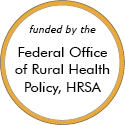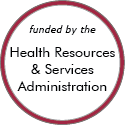Rural Project Examples: Physicians
Evidence-Based Examples
Thomas Jefferson University's Physician Shortage Area Program
Updated/reviewed September 2025
- Need: More rural doctors were needed in multiple states. In Pennsylvania, nearly half of the state's physicians practice in just three large metropolitan counties.
- Intervention: Sidney Kimmel Medical College at Thomas Jefferson University established the Physician Shortage Area Program (PSAP) in 1974 to recruit and support students who are from rural backgrounds and who wish to practice in rural communities.
- Results: Approximately 80% of PSAP alumni have remained in rural family medicine for at least 20 to 25 years after graduation.
Effective Examples
OHSU Rural Surgery Training
Updated/reviewed October 2024
- Need: General surgeons are needed in rural communities.
- Intervention: Oregon Health & Science University (OHSU) is sending residents to complete a general surgery rotation in rural southern Oregon.
- Results: 19 graduates of the rural residency program are currently practicing in a rural setting. The residents remain more likely than other OHSU residents to enter general surgery practice and to serve in a community of fewer than 50,000 people.
Rural Medical Education Program at University of Illinois College of Medicine Rockford
Added October 2023
- Need: To recruit and train medical students who are committed to choosing rural practice.
- Intervention: An add-on curriculum that includes seminars, field trips, and clinical rotations in rural and underserved areas.
- Results: 436 students have graduated from the RMED program between 1997 and 2023, with 65% of program graduates practicing in towns of less than 50,000 people.
MU AHEC Summer Community Program
Updated/reviewed September 2023
- Need: Lack of healthcare providers, specifically physicians, in rural Missouri.
- Intervention: Rising second-year medical students at University of Missouri's School of Medicine are given the opportunity to participate in a clinical program in a rural community setting.
- Results: Almost half of the participants from 1996-2010 chose to practice in rural locations upon graduation.
Promising Examples
Successfully Training and Educating Pre-medical Students (STEPS)
Updated/reviewed March 2025
- Need: To increase the number of primary care providers in northeast Kentucky.
- Intervention: STEPS provides support such as physician shadowing, mock interviews, and MCAT practice courses/exams for regional students applying to medical school.
- Results: Approximately 65% of participants have been accepted into medical school. The program has been replicated among most of Kentucky's regional AHECs.
Health Extension Regional Offices (HEROs)
Updated/reviewed May 2024
- Need: People in rural New Mexico often found it difficult to find and utilize needed resources from the University of New Mexico Health Sciences Center (UNMHSC).
- Intervention: UNMHSC created Health Extension Regional Offices (HEROs), in which HERO agents live in the communities they serve, help identify health and social needs, and link them with UNMHSC and other university resources.
- Results: In their regions, HERO agents' activities have been wide-ranging, including recruiting physicians, mobilizing research funds to address local priorities, working on economic development, training laypeople in Mental Health First Aid, and helping local institutions access UNMHSC resources.
TUSM-MHMMC Program Longitudinal Integrated Clerkship

Updated/reviewed April 2024
- Need: To fill vacant medical positions in Maine's rural medical facilities.
- Intervention: The Tufts Maine Track LIC program offers clerkships in rural medical facilities, exposing medical school students to the positives and possibilities that rural practices have to offer.
- Results: The program has seen an increase in students' interest in practicing in rural Maine. The majority of participants have pursued medical careers in one of the six core specialties studied during their clerkship.
Other Project Examples
Wisconsin Collaborative for Rural Graduate Medical Education
Updated/reviewed November 2025
- Need: Primary care physicians in the rural areas of Wisconsin.
- Intervention: A GME collaborative and technical assistance center that provides leadership, GME expertise, and support for expanding rural graduate medical education in Wisconsin.
- Results: The collaborative expanded rural graduate medical education opportunities which now include over 30 rural-focused residency programs. There are several GME opportunities in specialties ranging from family medicine to surgery, obstetrics/gynecology, psychiatry, internal medicine and more.
Targeted Rural Underserved Track (TRUST) Program

Updated/reviewed April 2025
- Need: There is a shortage of rural physicians in the Northwestern United States.
- Intervention: University of Washington medical students are receiving training through the TRUST program in rural communities across a five-state radius.
- Results: Long-lasting connections have been formed among regional communities, medical students, and rural health professionals, with the goal of producing more rural physicians.
Marshall University Rural Psychiatry Residency Program
Added December 2024
- Need: To train the next generation of psychiatrists in a rural context, while providing psychiatric care to an underserved region of West Virginia.
- Intervention: A new rural psychiatry residency program at Marshall University, in which residents split their time between the rural town of Point Pleasant and the larger city of Huntington.
- Results: The program welcomed its first class of residents in July 2024.
For examples from other sources, see:
